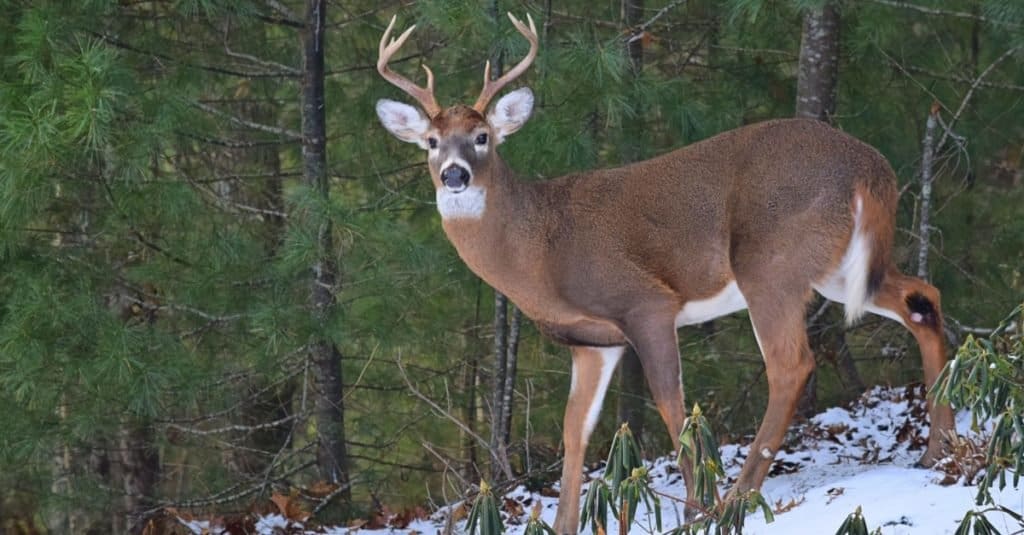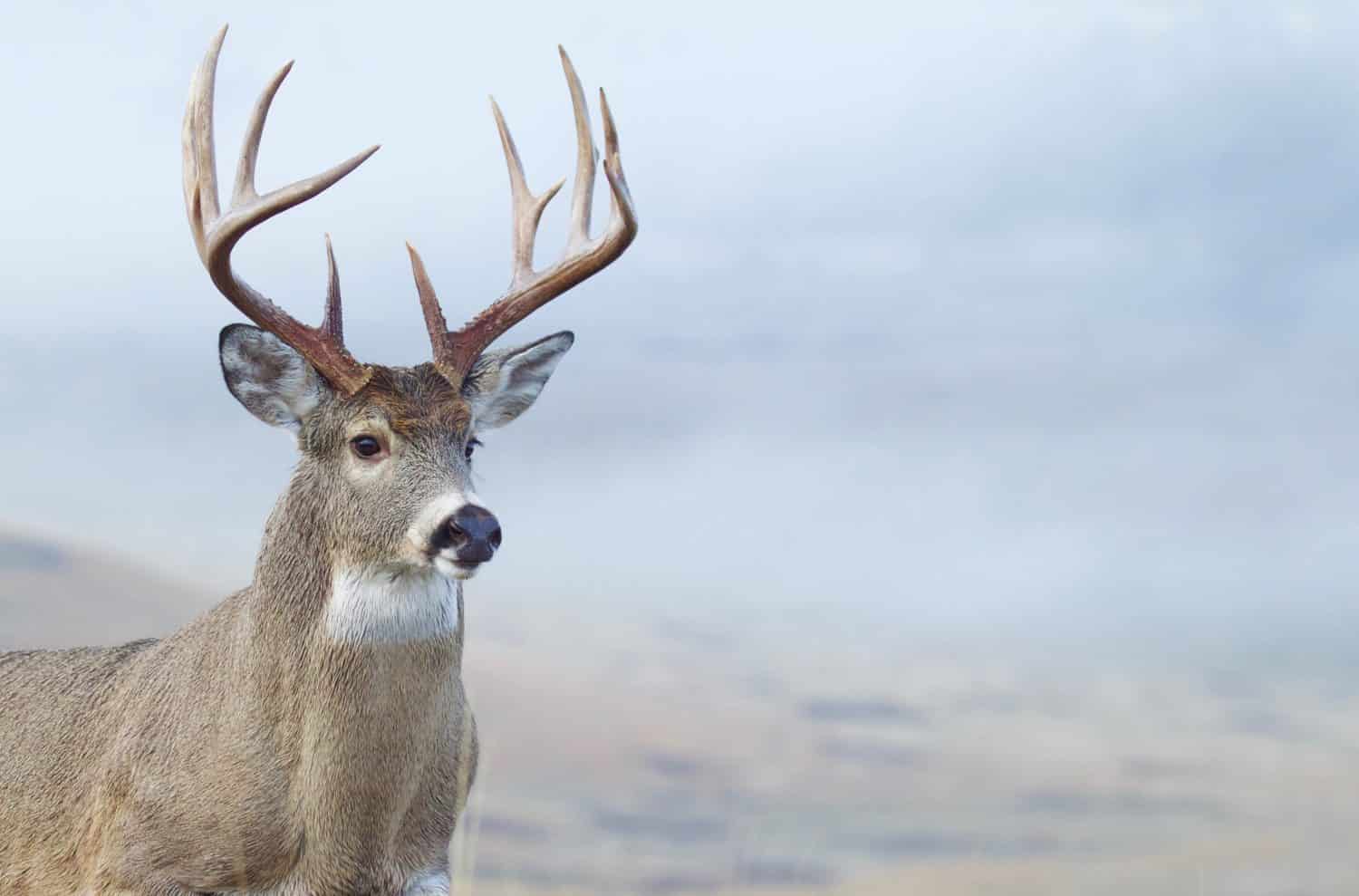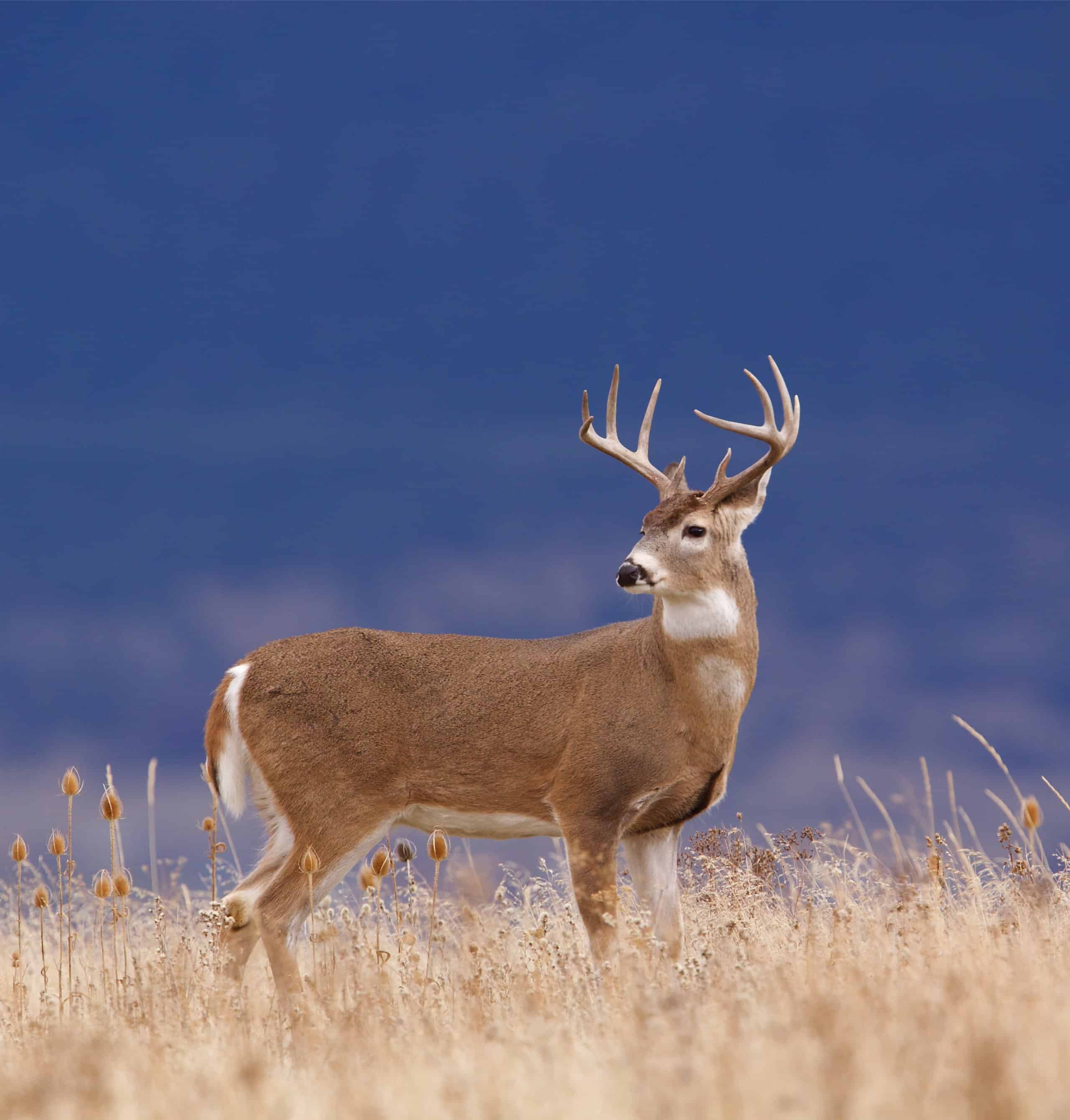Pennsylvania is one of the best states to go hunting. With so much big game, their welcoming environment allows these animals to thrive. It is famous for its deer hunting opportunities, and locals take this activity very seriously. With wild turkey and black bear as some of the biggest game, there is no better state than to embark on a whitetail deer hunting trip.
Whitetail deer in Pennsylvania spread across the state, offering the fourth-highest harvest of any antlered deer. They even have the second-highest harvest of deer without antlers. As their annual hunting season begins each September, they offer a chance for hunters to help with population management. By hunting whitetail deer, they also reduce the damage to their local forests. Through the many years of hunting deer, many people have set incredible records. However, one hunter got more than he bargained for with a 204-point whitetail deer.
The hunter set the record for the largest whitetail deer caught in Pennsylvania, but how does he rank against others? Who holds the world record? Do whitetail deer normally get this big? Take a look to learn more about this stocky animal and its recorded history.
What Are Whitetail Deer Like?

Male deer only have their antlers for a few short months before they fall off.
©Tom Reichner/Shutterstock.com
The white-tailed deer lives in North America exclusively, getting their name from the color of their tail’s underside. The rest of their coats change from reddish-brown to grayish-brown as the seasons get colder, but males have richer colors in their coats. As summer becomes fall, males show off their full antlers, which will come off in the winter to make room for new growth.
These boisterous mammals roam woodland forests whenever available, but their familiarity with nearby humans sometimes leads them to farmland and urban areas. Only the eastern side of the U.S. usually sees these deer roaming because of the plentiful forests and rivers along it. The only time you might see a whitetail deer outside of this dense area is when thick shrubs offer a place to graze nearby.
When choosing a habitat, these deer prefer a diet of maple, sassafras, poplar, or even birch when they are closer to the eastern coast. During the cold winters, they turn to conifers as their main source of food. The average lifespan of a white-tailed deer is 2-3 years, though some reach the old age of 10. There are a few sightings of 20-year-old deer, but it is rare.
Are Whitetail Deer Common in Pennsylvania?

Pennsylvania’s white-tailed deer population accounts for approximately 1.5 million deer within the state’s borders.
©Amy Lutz/Shutterstock.com
Pennsylvania is a hotspot for white-tailed deer activity. The local forests and weather provide the perfect home for white-tailed deer. Though other species of deer (like the mule deer and the black-tailed deer) live from coast to coast, white-tailed deer prefer the humidity and vegetation that the eastern side brings. The high population of white-tailed deer means that approximately 30 deer sit on every square mile. With such a high number of deer, it comes as no surprise that it is the official state animal of Pennsylvania.
As widespread as white-tailed deer are, the Agriculture Department says that they are responsible for damaging $90 million in crops and $73 million in commercial timber every year. That averages out to about $20,000 for each Pennsylvania nursery by the time the year ends. This heavy population also makes Pennsylvania one of the best places to hunt deer.
How Big Do Whitetail Deer Get?

Most whitetail deer have an
antler
score of 97-169, which is about 8-14 feet in length.
©Michael Sean OLeary/Shutterstock.com
By adulthood, whitetail deer usually stand 31-40 inches from their hooves to their shoulder. At 110-300 pounds, they weigh more than the average human, and their antlers make them a trophy for many hunters. Their white fur runs on their entire underside against their brown coat, from their tail to their throat.
Scoring a whitetail deer’s antlers is one of the common ways that hunters keep track of the various sizes of caught deer. The score shows how large the deer is, and each point is a physical trait. When someone manages to catch a higher-than-average score for a deer, enthusiasts revere it as a demonstration of your hunting capabilities. The primary system that hunters use to score the antlers is the Boone & Crockett method, which is based on the antlers. Since their antlers fall off annually, any buck with a high score already outsmarted several years of shedding them.
What is the Largest Whitetail Deer Ever Caught in Pennsylvania?

©Tom Reichner/Shutterstock.com
The record for the largest whitetail deer in Pennsylvania goes to Frederick Kyress for his buck in 1962. Kyress took a hunting trip out near his farm. One day, the whitetail deer ran across the farm when Kyress shot him. He never weighed or submitted a new record when he first caught the deer. After the hunting excursion, he collected the antlers of the deer like every other deer he caught. After his passing in 1993, his wife hosted a yard sale to get rid of all of the antlers.
One day, these antlers showed up in a Boyertown antique store without any information about his record. The display didn’t reflect the location or hunter because no one knew the story behind the catch. An antler collector submitted them to the Boone & Crockett Club in 2019, scoring a 202 7/8 at the time, but the revised score is now 204 6/8. As of 2023, you can see the antlers for yourself at the Wonders of Wildlife National Museum and Aquarium in Missouri.
With a 223 4/8 score, it is one of the top 5 whitetail deer in the entire world. If Kyress had entered the whitetail deer when he first laid claim to it, he would’ve held the world record for over two decades. During the Boone and Crockett Club’s 31st Big Game Awards Judges Panel, the antlers officially received the state record recognition. However, they remain on record without any recorded weight because of the delayed discovery.
The records in Pennsylvania’s record-breaking deer date back to the 1860s when hunters would record their catches. Even with records covering over 100 years of Pennsylvania’s history, only a few dozen deer had antlers that exceeded 200 inches.
What Is the Largest Whitetail Deer Ever Caught in the World?

Any whitetail deer over 200 pounds is considered a legendary catch. Most whitetail deer aren’t heavier than 95-169 pounds.
©Tom Reichner/Shutterstock.com
As legendary as the Kyress deer was, it is unfortunately not the largest whitetail deer caught in the entire world. John Arnett, a Canadian man, holds this record because he caught a 540-pound buck in 1977. After dressing, it weighed 431 pounds. While officials were supposed to examine it, the alleged reason it never made it to a commercial scale after dressing is because someone had it butchered. However, no one has been able to prove that was the reason for not getting it weighed on a government scale.
Before Arnett set the new record, Carl Leander of Minnesota held it. He established his record in 1926 when he caught a 511-pound whitetail deer, which was 402 pounds after dressing.
Thank you for reading! Have some feedback for us? Contact the AZ Animals editorial team.








